1.b Proboscis shorter than the head in side view; hind border of eyes in side view with a notch -> 5
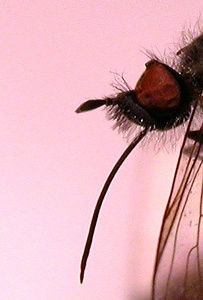
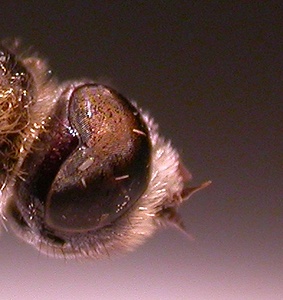
Proboscis longer than head and hind border of eyes straight, above/left and proboscis shorter than head and hind border of eyes with a notch, below/right.
2.a Body length smaller than 5mm., relatively sparse haired; tibia 3 without bristles -> Phthiria
2.b Body length longer than 5mm., relatively dense haired; tibia 3 with bristles -> 3
3.a First antennal segment inflated, longer and wider than the 3rd segment -> Conophorus
3.b First antennal segment cylindrical, shorter and smaller than the 3rd segment -> 4
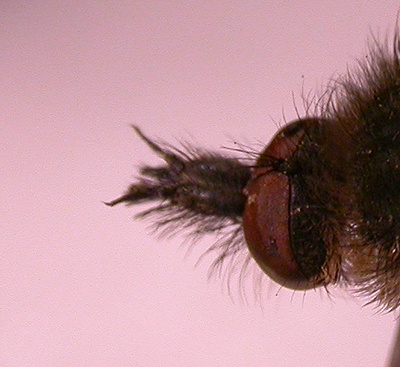
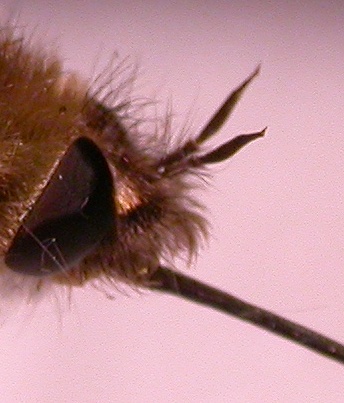
First antennal segment inflated, above/left; first antennal segment cylindrical below/right.
4.a Cross vein rm ends near the basis of the discal cell, at about 1/6th to 1/5th of the length of the discal cell, therefore the 1st basal cell (cell br) and 2nd basal cell (cell bm) equal in length -> Systoechus
4.b. Cross vein rm ends near the first third of the discal cell, therefore the 1st basal cell (br) much longer than the 2nd basal cell (bm) -> Bombylius
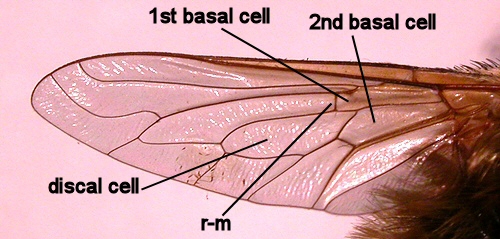
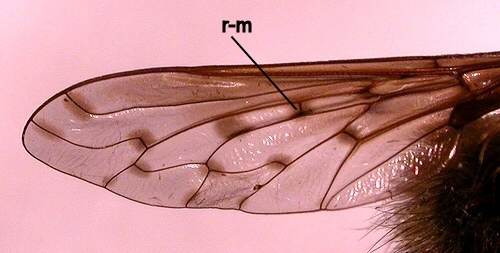
Cross vein rm near bsis of discal cell, above/left; cross vein rm near middle of discal cell, below, right.
5.a Body length smaller than 3mm.; Wing with discal cell fused with the 2nd basal cell (cell bm), forming one large cell -> Glabellula
5.b Body length longer than 5 mm.; Wing: discal cell separate from the 2nd cell basal -> 6
6.a Vein rs begins with a perpendicular angle on the vein beneath it, followed by a sharp bend -> 7
6.b Vein rs begins with a sharp angle on the vein beneath, lacing a sharp bend in the beginning -> Lomatia
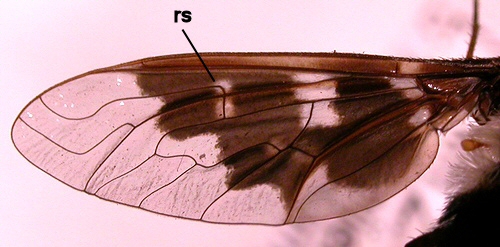
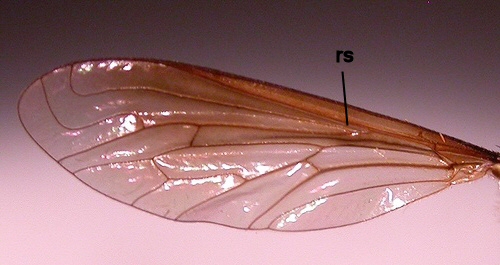
Vein rs starts perpendicular, above,left; ven rs starts with sharp angle, below, right.
7.a Wing hyaline, at most the front border diffusely brownish -> Villa
7.b Wing with dark patches, acutely bordered from the hyaline parts, the dark patches may cover most of the wing -> 8
8.a Cross vein rr present, adding an extra closed cell to the wing tip -> Exoprosopa
8.b Cross vein rr absent, no extra closed cell present in the wing tip -> 9
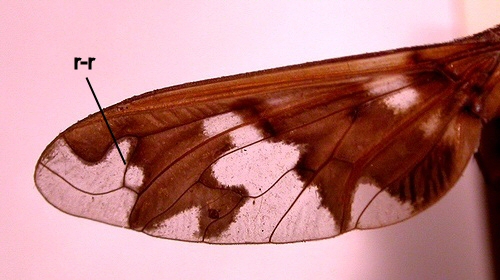

Cross vein rr present, above/left; cross vain rr absent, below/right.
9.a Wing: discal cell completely darkened, without hyaline parts; Antenna: last segment on the tip haired -> Anthrax (part)
9.b Wing: discal cell partly or completely hyaline; Antenna: last segment on the tip haired or not -> 10
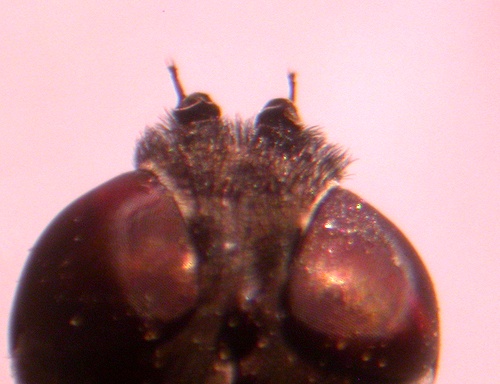
Anthrax, head and antennae: see hairs on tip of antennae.
10.a Discal cell hyaline or darkened only at the basis and tip along the veins -> 11
10.b Discal cell darkened for bout half its surface or more -> 12
11.a Antenna: last segment on the tip haired; wing darkened parts extend from front border into the wing -> Anthrax (part)
11.b Antenna: last segment bare on tip; wing: only front border darkened, with straight border with the remaining part of the wing -> Exhyalanthrax
12.a Wing: dark part of wing with hyaline spots -> Thyridanthrax
12.b Wing: dark part of with without hyaline spots, sometimes coloured whitish at cross veins -> Hemipenthes

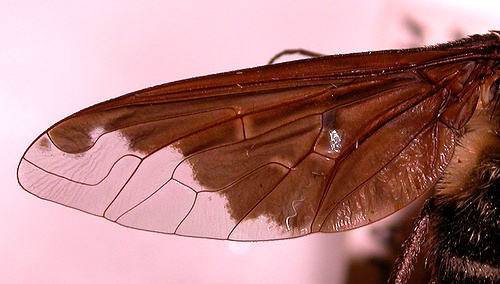
Wing: dark part with hyaline patches, above, left; dark parts without hyaline patches, below/right.